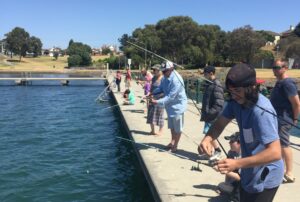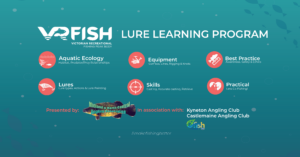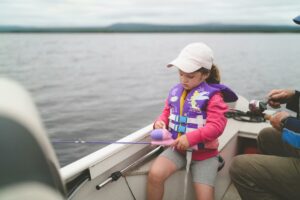March 23, 2021
Written by the Victorian Environmental Water Holder (VEWH)
Water for the environment is a legal share of water available in storages that’s set aside and released to improve the health of rivers and wetlands to support native fish, other animals and plants that live, feed and breed in them. It can be released in 18 river catchments across Victoria benefiting 13 native recreational fish species that rely on specific flows for survival, dispersal, spawning, recruitment and growth.
To be most effective, the right amount of water needs to be released at the right time and for the right duration. Why and how water for the environment is released is influenced by climate conditions. For example, under drought conditions waterways may stop flowing during summer and autumn; water for the environment releases can protect rivers by providing low flows, maintaining refuge areas and reducing the risk of catastrophic events, such as poor water quality and fish deaths. Alternatively, under wet to very wet conditions, high flows, flooding, and spills over water storages are expected, particularly during winter and spring. Here, water for the environment releases can enhance rivers, by maintaining year-round low flows (continuous stable, sustained low flows) and seasonal freshes (pulses of water that usually last for a few days), restoring connections between rivers and floodplain wetlands, improving instream and riverbank habitats, and boosting the recruitment of fish, other animals and plants.
Spring and summer freshes provide a cue for Golden Perch and Silver Perch spawning, whilst autumn freshes provide increased water depth for adult Australian Bass and Tupong that are migrating from freshwater downstream towards estuary habitat for spawning and breeding.
The VEWH’s seasonal watering plan is a statewide plan that guides environmental watering decisions in Victoria. It describes watering actions that are specifically planned to support cultural, social, recreational and environmental objectives. Specific icons are used in the plan to show where angling activities are supported. A seasonal watering plan is released on 30 June each year.
Recreational fishers are able to provide input into potential environmental flows via Catchment Management Authorities and Melbourne Water, who engage Traditional Owners, program partners and interested stakeholders such as anglers, irrigators and other recreational users, during the development of annual seasonal watering proposals.
Allocations of water for the environment are limited and so must be managed well to make every drop count. There are many ways water for human use and environmental water can be delivered to maximise environmental benefits efficiently. Carrying out complementary river rehabilitation actions in systems that receive environmental water also helps maximise outcomes for native fish.
Recreational fishers have fought hard for environmental water entitlements in Victoria because they recognise the important role environmental flows play in supporting healthy habitat and fisheries. The value of environmental water for recreational fishing is far broader since this activity helps support local communities, businesses, employment, and individual well-being, which are now more important than ever given the current COVID-19 pandemic. Environmental water also provides shared benefits for Traditional Owners and other recreational users, such as birdwatchers and kayakers. Without water for the environment the health of Victoria’s waterways and the plants and animals that rely on them will decline as seen recently in the Darling River. This is why many Victorian anglers continue to show their support for water for the environment and some work closely with the Victorian Environmental Water Holder through the Victorian Fish Habitat and Flows Alliance.
Learn more about environmental water on the Victorian Environmental Water Holder’s website.








